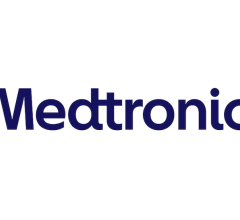
April 24, 2015 — Cardiovascular Systems Inc. announced that it has received U.S. Food and Drug Administration (FDA) clearance for the 4 French, 1.25 Solid Diamondback 360 Peripheral Orbital Atherectomy System (OAS) for the treatment of peripheral artery disease (PAD). Specifically, the clearance covers the company’s 145-cm-long 1.25mm Diamondback 360 Solid Crown, 4 Fr sheath compatible and the Modified 1.25mm Diamondback 360 Micro Crown, 4 Fr sheath compatible.
CSI’s Diamondback Peripheral 145cm systems are available in two crown designs: the 1.25mm Solid Crown and the 1.25mm Micro Crown. Both devices offer a smaller profile and a more flexible shaft for improved ease of use.
“CSI’s new 4 Fr compatible Diamondback devices are redefining interventional vascular medicine,” said Cezar Staniloae, M.D., NYU Medical Center. “The use of smaller access sheaths has been shown to reduce procedure times, enable quicker patient recovery and result in fewer procedural complications from bleeding, providing additional procedural benefits to patients and physicians — in addition to expanding physicians’ treatment options.”
As many as 18 million Americans, most over age 65, suffer from PAD, which is caused by plaque accumulation in peripheral arteries (commonly the pelvis or leg), reducing blood flow. Symptoms include leg pain when walking or at rest. Left untreated, PAD can lead to severe pain, immobility, non-healing wounds and eventually limb amputation. With risk factors such as diabetes and obesity on the rise, the prevalence of PAD is growing at double-digit rates.
Moreover, approximately 25 percent of PAD cases will progress to critical limb ischemia (CLI), which is associated with complex occlusions in the tibial arteries (responsible for supplying blood flow to the lower legs and feet). It is estimated that up to 20 percent of these occlusions are unable to be treated from the traditional femoral artery access site. However, recent advancements in technology and techniques have made the use of retrograde tibiopedal access (where physicians achieve access through the arteries in the foot or ankle) more popular, thereby expanding the treatment options available for PAD patients.
Millions of patients with PAD may benefit from treatment with orbital atherectomy utilizing the Stealth 360 and Diamondback 360 Peripheral Orbital Atherectomy Systems, minimally invasive catheter systems developed and manufactured by CSI. These systems use a diamond-coated crown, attached to an orbiting shaft, which sands away plaque while preserving healthy vessel tissue. Balloon angioplasty and stents have significant shortcomings in treating hard, calcified lesions. Stents are prone to fractures and high recurrence rates, and treatment of hard, calcified lesions often leads to vessel damage and suboptimal results.
The Stealth 360 and Diamondback 360 Peripheral Orbital Atherectomy Systems are percutaneous orbital atherectomy systems indicated for use as therapy in patients with occlusive atherosclerotic disease in peripheral arteries and stenotic material from artificial arteriovenous dialysis fistulae. The systems are contraindicated for use in coronary arteries, bypass grafts, stents or where thrombus or dissections are present. Although the incidence of adverse events is rare, potential events that can occur with atherectomy include: pain, hypotension, CVA/TIA, death, dissection, perforation, distal embolization, thrombus formation, hematuria, abrupt or acute vessel closure or arterial spasm.
For more information: www.csi360.com


 November 08, 2024
November 08, 2024 








